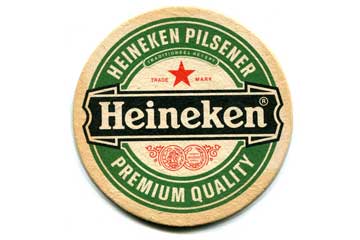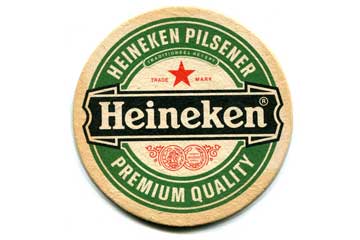*Positioning
The building blocks of Heineken’s successful positioning

For us Dutch people, Heineken is a fairly everyday brand that competes with Grolsch and Jupiler for a place in the Dutch shopping cart. In the rest of the world, it’s a famous premium brand, and even James Bond enjoys a Heineken beer. There’s already been plenty written about the quality and brand strategy of the beer brand, but as a company, Heineken was lagging behind international competitors until recently. How did they turn the tide? And how can this be applied to the strategy and marketing of your own B2B organization?

bron: http://flic.kr/ps/nRN9X
In their home markets of Europe and North America, Heineken saw a decline in consumption, and in the growth markets of Asia and Africa, the company had little presence. The beer market was a quantitative battle over sold liters of beer, and Heineken was far from leading. They needed a change in direction. Founder Freddy Heineken emphasized innovation, daring, and originality as building blocks, but what did that mean in this market? Let’s discuss Heineken’s positioning based on these building blocks:
1. Innovation from within- To gain a foothold in key growth markets and maintain profitability in their home market, Heineken needed a change. They chose the familiar premium (Heineken) brand strategy. However, instead of introducing just one brand in a new market, they launched multiple brands simultaneously. For example, they conquered the Asian market by acquiring brands like Tiger and Kingfisher, positioning them alongside their own Heineken beer as premium brands and deploying their marketing machine. It was a bold but ultimately successful strategy. Your organization also possesses a foundation of knowledge, brand recognition, expertise, or experience that no one else in the market has. Find a concrete application of this strength in your evolving market to establish sustainable differentiation.
2. Dare to embrace new means and channels – The entire beer market primarily relies on old and trusted means and channels. For example, innovation typically involves a costly Super Bowl advertisement. Heineken realized that they needed to go further and engage in real communication with their target audience. While Heineken uses traditional methods for activation, they primarily rely on new and social media for communicating with their target audience. In your market, there are likely new channels and methods that the majority hasn’t explored yet. You don’t have to completely discard the tried-and-true methods, but being a pioneer allows you to explore interesting possibilities with a lower budget.
3. Originality, in both message and behavior – Using new means and channels doesn’t just mean more contact with your target audience. By involving people in your brand experience, you also need to be willing to relinquish some control. While most competitors want to maintain control over the brand, Heineken strives to facilitate their target audience. The result is a strong brand that people actively identify with. Additionally, Heineken gains a wealth of data from the market, knowledge about what their target audience truly associates with the brand. This also applies in B2B. We’re not suggesting that you should necessarily give up all control, but your message should align with your behavior. Walk the talk: don’t position yourself as an innovative and forward-thinking company while prohibiting employees from sharing photos and stories online on social media.
Success of Heineken’s positioning
This approach yielded excellent results for Heineken in 2012. CEO Jean-François van Boxmeer, who was criticized for an “unfortunate” acquisition strategy the previous year, is now honored as the top executive of the year, and Heineken is even considered the best company according to managers. The core of the story is clear: dare to innovate and choose a unique course that aligns with your company’s strengths.